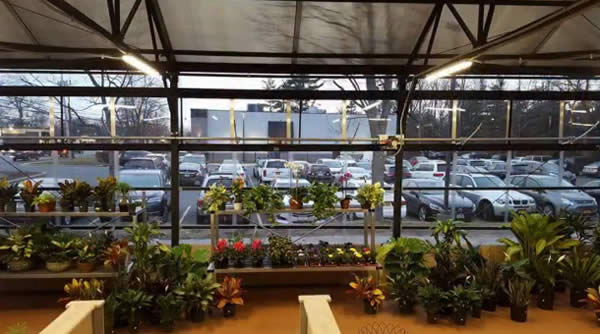
Bringing the outdoors inside is beneficial not only to one's senses, but also to one's health. NASA has done extensive research on the efficacy of plants at absorbing contaminants in the air, while converting carbon dioxide into oxygen.
We're going to take a look at some of the plants that provide pollution-free homes. By incorporating these plants into your home, you will be improving the quality of the air that you breathe, which will in turn make you feel better, perform better, and generally enjoy life more.
These plants can also be easily moved outdoors; imagine a spring afternoon on your rocking chair front porch, surrounded by the very plants that offered so much pleasure inside throughout the colder months.
Philodendrons were determined by NASA to be among the best house plants for removing toxins from the air. They love temps from 60 to 72 degrees, and do not require a lot of light. Occasionally treat them to a "bath" of soapy water to remove dust and control insects.
When the temps turn warm, bring them outdoors, placing them in shade, of course always ensuring that their feet rest in rich, moist soil containing a good supply of organic matter. Well-rooted plants should receive diluted applications of a liquid fertilizer every week or two.
Ferns, which in the language of flowers mean sincerity, magic, fascination, confidence, and shelter, have a lot in common with dinosaurs. They co-existed in the Mesozoic era, and even predate dinosaurs.
Dating back 300 million years, they are among the world's oldest living things.
With approximately 10,500 species, ferns grow in the wild as well as in landscaped gardens on almost every continent in the world. Perennials, they can be either evergreen or deciduous. They dislike strong sunlight, high wind, and dryness at the root zone.
Astute gardeners will be able to find the perfect fern for their needs, ranging in size from the Wall-rue at 2" to the tree ferns of New Zealand that reach heights of 30'. For indoor plants, consider incorporating Boston ferns in your clean-air indoor garden; they are full and lush and work equally well in pots or hanging baskets. As the maidenhair fern thrives on high humidity, it's the perfect choice for placement in a bathroom.
While the asparagus fern is not really a fern at all but rather an actual asparagus, it is a delicate, fern-like plant that grows well indoors, and also loves being taken outside when the weather is warm.
Just remember to keep your ferns in indirect light, whether inside or out, and place their containers in pebble-filled trays, adding water into the tray until it just covers the pebbles; do not over-water.
In the language of flowers, the spider plant represents an offer of elopement. An amazingly easy-to-care-for plant, it takes a lot of effort to kill the "airplane plant." Yet another of our clean air plants, the Chlorophytum comosum has proven quite effective in the absorption of chemicals that include formaldehyde, xylene, benzene, and carbon monoxide. It likes medium to bright light, isn't fussy about excess humidity, and prefers cool to average temps, even while tolerating warmer conditions.
Another indoor plant that does equally well outside when the weather warms up, it's perfect for a hanging basket. This fast-grower sends out "babies," or spiderettes, which are plantlets on long stalks. To propagate set the plantlet, while still attached to the mother plant, on the surface of a pot filled with a soilless potting medium, using a bent paper clip to hold it in place. Once it begins to root, sever it from the mother plant.
If plantlets on your spider have already begun to develop roots, sever and pot them in soil. One mother plant will lead to many other plants!
Golden Pothos, aka Devil's Ivy, is practically impossible to kill. It will grow under nearly any conditions, either as a climber when trained around a wooden stake, or in a hanging basket. You have probably seen it trailing along the perimeter of office cubicles, where it thrives with only fluorescent lighting.
Another of our favorite air purifiers, it removes formaldehyde from the atmosphere, and sets the standard for neglect-tolerant plants.
In fact, about the only thing that will kill a pothos is over-watering; a shallow root system makes it susceptible to root rot. This in a way is somewhat ironic, as your home can sport a plethora of pothos by simply placing clippings in water, and in about a week roots will begin to form.
When fully rooted, pop into a pot of loose, well-draining soil, and keep it evenly moist.
We've started you out with some of the most reliable houseplants that will not only provide you with healthier air, but are also easily moved outside during warm weather. Now it's up to you to exploit these easy-to-grow beauties so that you may find yourself forever surrounded by a garden.
Click to print this article.











